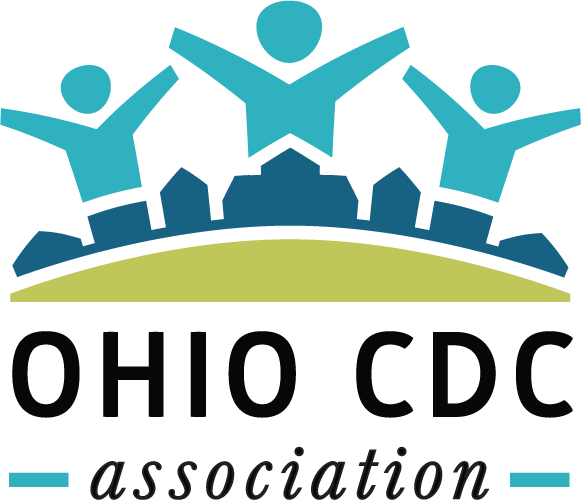Federal News
Rental Crisis and CDC Eviction Moratorium to Benefit Landlords Over Renters
New data analyzed by the Center on Budget and Policy Priorities (CBPP) found that one in three adults had trouble paying for usual household expenses in the last seven days; the difficulty is particularly acute for Black, Asian, and Latino adults. In fact, 48% of Black adults and 45% of Latino adults report difficulty covering regular expenses, compared to 25% of white adults. The analysis also reveals that nearly one in six renters are not caught up on rent, one in five Latino and Asian renters, and one in four Black renters. One in five renters living with children are behind on rent, and more than 4 in 10 children in renter households face food and/or housing hardship. Read more of this article here. This CNN story highlights a Columbus family and neighborhoods at risk for COVID witnessing disproportionately high eviction rates.
From the National Low Income Housing Coalition (NLIHC)...The Trump administration issued on October 9 harmful new guidance on the Centers for Disease Control and Prevention's (CDC's) eviction moratorium for nonpayment of rent. The guidance grants landlords additional power and creates new burdens for renters seeking moratorium protections.
The CDC instated on September 4 a moratorium on evictions for nonpayment of rent for tenants who meet certain eligibility criteria and who submit a signed declaration of eligibility to their landlord. While the new guidance does not rescind this vital protection, it allows landlords to challenge tenant declarations and allows landlords to initiate eviction
proceedings for nonpayment of rent at any time, although an actual eviction of a covered tenant cannot take place until the moratorium expires on January 1, 2021.
Allowing landlords to challenge declarations of eligibility shifts the burden of gathering paperwork and evidence to renters struggling to remain stably housed during the pandemic. Moreover, permitting landlords to initiate eviction proceedings - even when covered renters cannot be evicted until the moratorium ends - provides landlords new opportunity to intimidate tenants who are behind on their rent and pressure tenants to vacate their homes sooner.
The new guidance undermines the intent of the order by eroding protections for renters and making it more difficult for struggling renters to remain stably housed.
More information:
Read the guidance here.
Read the CDC's eviction moratorium order here.
See NLIHC's resources on the CDC's eviction moratorium here.
State News
Rebuilding Ohio Launches Platform to Help Ohio Thrive Post-pandemic
While crisis management is far from over and the need for resources for relief and basic needs is paramount, it's important that policymakers begin to think about how recovery will look. Ohio's Main Streets, neighborhoods, businesses, employees, and residents will be foundational blocks to revitalizing Ohio's communities and economies.
To lead Ohio into this recovery, a statewide coalition of Ohio's economic and community development nonprofits have joined together to form the Rebuilding Ohio Coalition that represent over 300 community and economic development nonprofits, and serve hundreds of small businesses and thousands of families. Rebuilding Ohio has established a platform that provides policymakers with a blueprint for sensible policy solutions that can be adopted to help Ohio's families, small businesses, and neighborhoods thrive in the post-pandemic world.
The Rebuilding Ohio platform offers a series of policy recommendations for state policymakers, which focus on three policy areas:
EMPOWER OHIO'S FAMILIES THROUGH HOUSING, FINANCIAL STABILITY, AND FOOD SECURITY. Working families are especially hard hit by the pandemic; the Coalition's six recommendations provide a comprehensive approach that stabilizes families and improves the quality of life in marginalized communities.
FORTIFY OHIO'S SMALL BUSINESSES AND MAIN STREETS. Ohio's cities and towns are all unique, thanks to their local businesses and merchants, as well as their beautiful downtowns and commercial corridors in. The Coalition's four recommendations help local leaders retain and support local businesses and the heart of their communities.
STEWARD RESOURCES EFFECTIVELY AND BUILD LOCAL CAPACITY. With so few resources available and need so great, it is imperative that every dollar is stretched to the maximum. The Coalition offers three commonsense recommendations to ensure communities use state and federal investments strategically and building expertise at the same time.
To read the full platform, and to learn more about the Rebuilding Ohio Coalition, follow the coalition on Twitter @RebuildOhio and visit www.rebuildingohio.org.
Ohio to send $429.5M to Families, Businesses, and Nonprofits for COVID-19 Relief
Low-income families, small businesses, bars and restaurants, hospitals, colleges, nonprofits and arts groups hit hard financially by the coronavirus will be getting $429.5 million in federal relief, Gov. Mike DeWine announced Friday afternoon.
DeWine said the relief package will include $50 million for low-income families to pay their rent, mortgage, and sewer and water bills. Those funds will be distributed to Community Action Agencies using the Community Services Block Grant formula. Households with incomes up to 200% of the federal poverty level will be eligible. Households can apply for aid through their local Community Action Agency starting November 2nd.
Another $125 million will be available for small business relief grants of $10,000, with an additional $37.5 million to help bars and restaurants with $2,500 grants, and $20 million to support arts and cultural organizations. Learn more about small business relief here. The application for small business relief opens November 2.


